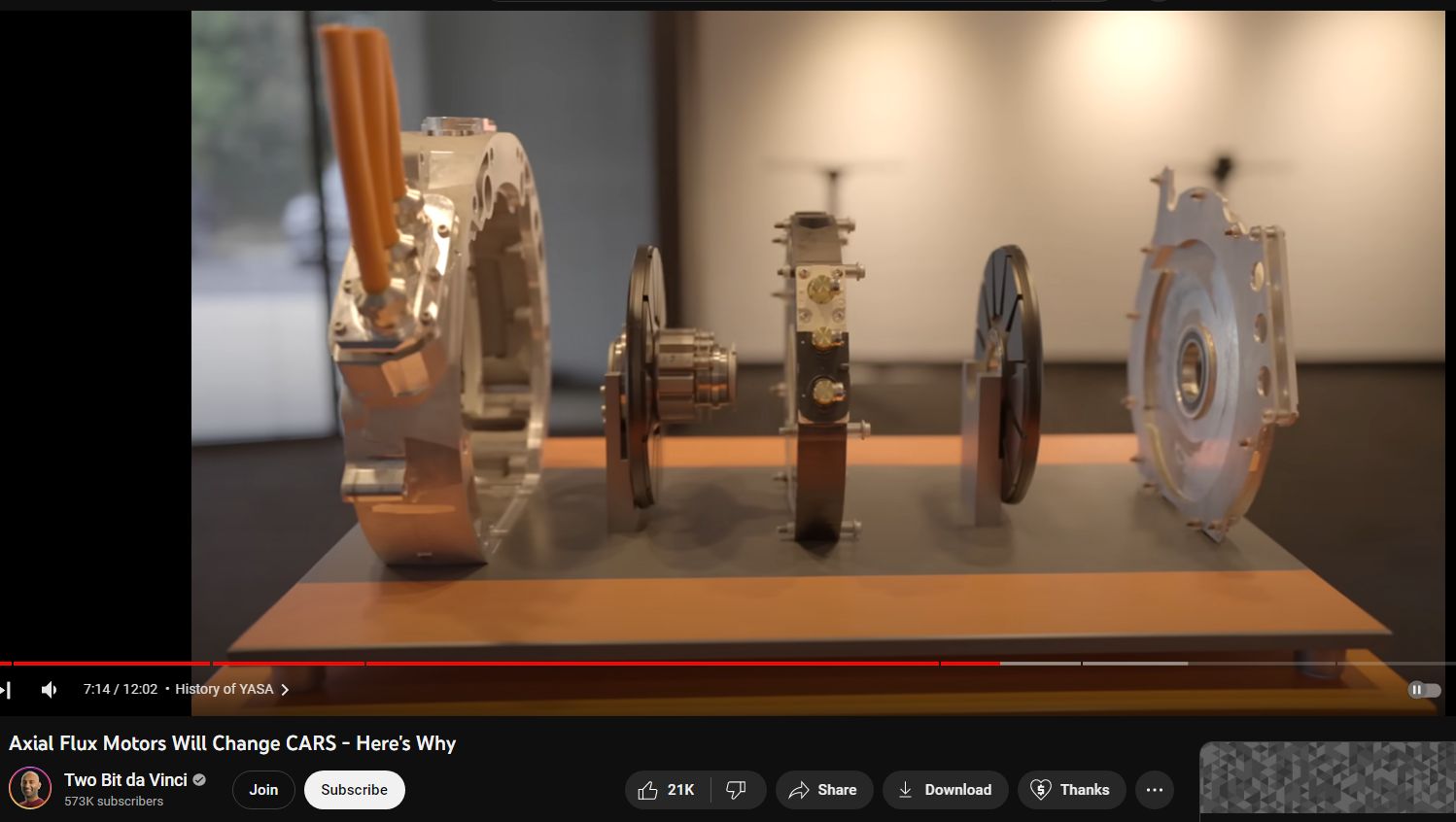https://www.youtube.com/watch?v=HFY0cNRQjHA
CGPT
An axial flux motor, also known as a pancake motor due to its flat and disc-like shape, represents a type of electric motor that differs significantly from the more common radial flux motor in terms of design and magnetic flux direction. In an axial flux motor, the magnetic flux flows along the axis of the motor, parallel to the shaft, as opposed to radial flux motors where the flux flows perpendicularly to the axis.
### Design and Construction
Axial flux motors consist of a rotor and stator that are aligned parallel to each other, with the magnetic field running axially through the motor. This design allows for a compact and efficient configuration that can be more effective in specific applications compared to traditional radial designs. The motors can be designed with single or dual rotors, with the stator sandwiched in between in the case of the latter, further enhancing their power density and efficiency.
### Advantages
– **High Power Density and Efficiency**: Due to their design, axial flux motors can achieve higher power density and efficiency levels, especially in a smaller, lighter package. This makes them particularly attractive for applications where space and weight are critical constraints.
– **Improved Cooling**: The flat, disc-like shape facilitates better cooling of the motor components. In some designs, this characteristic allows for higher continuous power outputs because heat can be dissipated more effectively.
– **Flexibility in Design**: The modular nature of axial flux motors allows for flexibility in design, making them suitable for a wide range of applications, including automotive, aerospace, and renewable energy systems.
### Applications
– **Electric Vehicles (EVs)**: Axial flux motors are increasingly being considered for EVs due to their efficiency and high power-to-weight ratio, contributing to longer range and reduced vehicle weight.
– **Drones and UAVs**: Their compact size and high efficiency make them ideal for drones and unmanned aerial vehicles (UAVs), where space is limited and efficiency is paramount.
– **Renewable Energy Systems**: In wind turbines and other renewable energy applications, axial flux motors can be used to generate electricity efficiently.
### Challenges
Despite their advantages, axial flux motors face certain challenges regarding manufacturing complexity and costs. The unique design requires precise alignment of components and can involve more complex assembly processes compared to traditional motors. However, advancements in manufacturing technologies and materials are helping to overcome these challenges, making axial flux motors more accessible for a wider range of applications.
### Future Outlook
With ongoing research and development, especially in materials science and electromagnetic design, axial flux motors are becoming increasingly viable for a broad spectrum of applications. Their potential for high efficiency and compactness aligns well with the growing demand for sustainable and energy-efficient technologies in various sectors, indicating a promising future for this type of motor.
